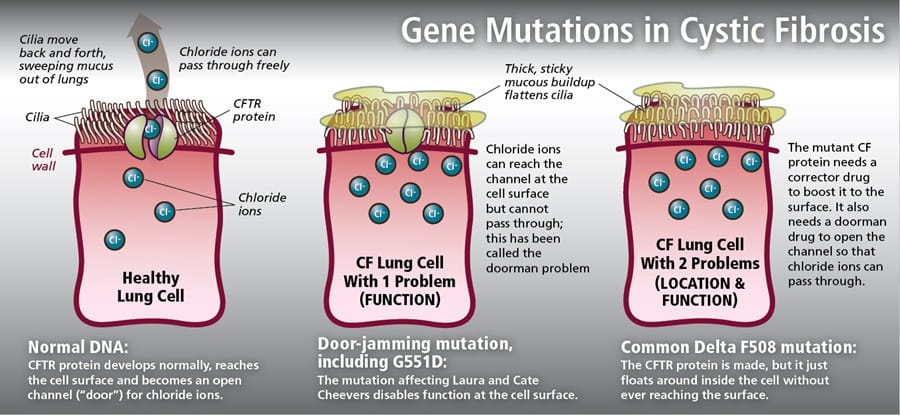Makindo Medical Notes"One small step for man, one large step for Makindo" |
|
|---|---|
| Download all this content in the Apps now Android App and Apple iPhone/Pad App | |
| MEDICAL DISCLAIMER: The contents are under continuing development and improvements and despite all efforts may contain errors of omission or fact. This is not to be used for the assessment, diagnosis, or management of patients. It should not be regarded as medical advice by healthcare workers or laypeople. It is for educational purposes only. Please adhere to your local protocols. Use the BNF for drug information. If you are unwell please seek urgent healthcare advice. If you do not accept this then please do not use the website. Makindo Ltd. |
Cystic Fibrosis
-
| About | Anaesthetics and Critical Care | Anatomy | Biochemistry | Cardiology | Clinical Cases | CompSci | Crib | Dermatology | Differentials | Drugs | ENT | Electrocardiogram | Embryology | Emergency Medicine | Endocrinology | Ethics | Foundation Doctors | Gastroenterology | General Information | General Practice | Genetics | Geriatric Medicine | Guidelines | Haematology | Hepatology | Immunology | Infectious Diseases | Infographic | Investigations | Lists | Microbiology | Miscellaneous | Nephrology | Neuroanatomy | Neurology | Nutrition | OSCE | Obstetrics Gynaecology | Oncology | Ophthalmology | Oral Medicine and Dentistry | Paediatrics | Palliative | Pathology | Pharmacology | Physiology | Procedures | Psychiatry | Radiology | Respiratory | Resuscitation | Rheumatology | Statistics and Research | Stroke | Surgery | Toxicology | Trauma and Orthopaedics | Twitter | Urology
Related Subjects:
|Cystic Fibrosis
|Sweat Test
|Osteoporosis
|Malabsorption
|Bronchiectasis
|Pseudomonas infection (Pseudomonas aeruginosa)
|Autosomal Recessive
|Genetic Mutations
|Clustered Regularly Interspaced Short Palindromic Repeats CRISPR
⚠️ Cystic Fibrosis (CF) can present unexpectedly and severity varies widely.
✅ Elevated chloride in a pilocarpine-induced sweat test is diagnostic.
🦠 Interestingly, carriers have partial resistance to cholera as the toxin cannot open the chloride channels in the small intestine.
💡 With modern care, the UK median survival now exceeds 50 years.
📖 About
🧬 Aetiology
🧪 Gene Mutations & Effects

🔍 Diagnosis
🧪 Investigations
🫁 Clinical (Pulmonary)
🍽️ Clinical (Gastrointestinal)
🧍 Other Systems
📊 Summary of Testing
Diagnostic Test
Description
Criteria
🧪 Sweat Chloride Test
Chloride concentration in sweat
≥60 mmol/L = diagnostic; 30–59 borderline; <30 unlikely
🧬 Genetic Testing
Identification of CFTR mutations
Two pathogenic variants confirms CF
⚡ Nasal Potential Difference
Assesses CFTR ion transport
Abnormal in atypical cases
👶 Newborn IRT
Raised immunoreactive trypsinogen
Triggers confirmatory testing
⚠️ Complications
💊 Management
Area
Interventions
Notes
Airway Clearance 🫁
Chest physiotherapy, oscillating PEP, nebulised hypertonic saline
Daily lifelong therapy
Mucolytics 💨
Dornase alfa (DNAse) inhalation
Improves FEV1, reduces exacerbations
Antibiotics 💊
Oral, inhaled, IV guided by cultures; inhaled tobramycin for chronic pseudomonas
Rotate to reduce resistance
Anti-inflammatory
Azithromycin long-term (anti-inflammatory + anti-Pseudomonas)
Evidence-based survival benefit
Nutrition 🍽️
Pancreatic enzyme replacement (PERT), fat-soluble vitamin supplements, high-calorie diet
Essential for growth and survival
CFTR Modulators 🧬
Ivacaftor, Lumacaftor/Ivacaftor, Tezacaftor/Ivacaftor, Elexacaftor/Tezacaftor/Ivacaftor (Trikafta/Kaftrio)
Genotype-specific, game-changing for eligible patients
Complication management
Treat CFRD, bone disease, liver disease
Regular screening essential
Transplant
Lung transplantation for advanced disease
Improves survival in end-stage CF
Psychosocial ❤️
Counselling, mental health, family support, CF charities
Quality of life focus
📚 References